 Creepy
Creepy  Creepy
Creepy  Movies and TV
Movies and TV 10 Movies That Get Elite Jobs Right, According to Experts
 Weird Stuff
Weird Stuff 10 Times Real Laws Were Based on Bizarre Hypotheticals
 Animals
Animals 10 Inspiring Tales of Horses Being Human
 Mysteries
Mysteries Top 10 Haunting Facts About the Ghost Ship MV Alta
 History
History 10 Surprising Stories About the Texas Rangers
 Humans
Humans 10 Philosophers Who Were Driven Mad by Their Own Theories
 Miscellaneous
Miscellaneous 10 Video-Game-Worthy Weapons and Armors from History
 Weird Stuff
Weird Stuff 10 Psychics Who Accurately Predicted Wartime Events
 The Arts
The Arts 10 Pieces of Art Inspired by a Broken Heart
 Creepy
Creepy 10 Death Superstitions That Will Give You the Creeps
 Movies and TV
Movies and TV 10 Movies That Get Elite Jobs Right, According to Experts
 Weird Stuff
Weird Stuff 10 Times Real Laws Were Based on Bizarre Hypotheticals
Who's Behind Listverse?

Jamie Frater
Head Editor
Jamie founded Listverse due to an insatiable desire to share fascinating, obscure, and bizarre facts. He has been a guest speaker on numerous national radio and television stations and is a five time published author.
More About Us Animals
Animals 10 Inspiring Tales of Horses Being Human
 Mysteries
Mysteries Top 10 Haunting Facts About the Ghost Ship MV Alta
 History
History 10 Surprising Stories About the Texas Rangers
 Humans
Humans 10 Philosophers Who Were Driven Mad by Their Own Theories
 Miscellaneous
Miscellaneous 10 Video-Game-Worthy Weapons and Armors from History
 Weird Stuff
Weird Stuff 10 Psychics Who Accurately Predicted Wartime Events
 The Arts
The Arts 10 Pieces of Art Inspired by a Broken Heart
10 More Little Known Massacres
Unfortunately, there are plenty of horrendous massacres, genocides and mass killings in history. For many of us, learning about them appeals to our morbid curiosity. You should all be familiar with the most well-known of these tragedies: the Holocaust, Wounded Knee, the Rwandan Genocide, etc. But like most historical topics, there are lots of events that tend to be swept under the rug, all arguably just as interesting and intriguing as the household names. You may have heard of some of these, but I think the majority of the entries in this list will be among the most fascinating, and thought-provoking, massacres in history that you’ve never heard of. In order, from earliest to most recent:
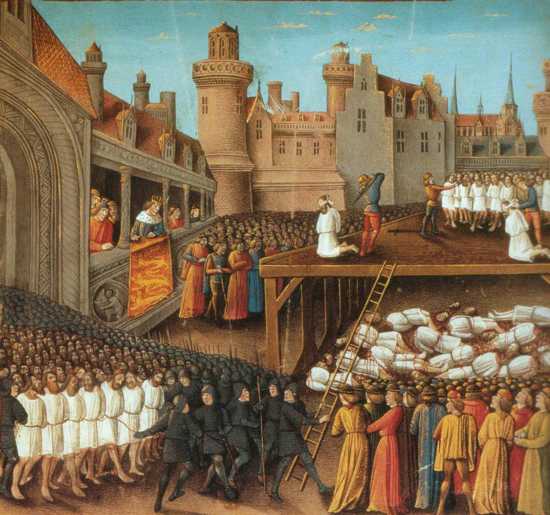
In the aftermath of the Fall of Acre, during the Third Crusade, Richard the Lionheart attempted to negotiate terms of surrender with the Saracens. Richard wanted to exchange over 3,000 captured prisoners for the True Cross, as well as a hefty ransom and imprisoned Christians. The True Cross was believed to be the actual physical cross upon which Jesus Christ was crucified.
After much delay by Saladin and the Muslims, Richard, frustrated and angered, personally marched his prisoners to a hill called Ayyadieh. There, in full view of the nearby Muslim army encampment, Richard ordered the slaughter of the over 3,000 prisoners, women and children included. They were all mercilessly beaten to death, axed and cut down by swords and lances. A Muslim force, so enraged by this act, attempted to charge the crusader lines but was repeatedly beaten back, allowing Richard and his army to retire in good order. Thus concluded one of the most unusually ruthless battles/massacres, even by Crusades’ standards.
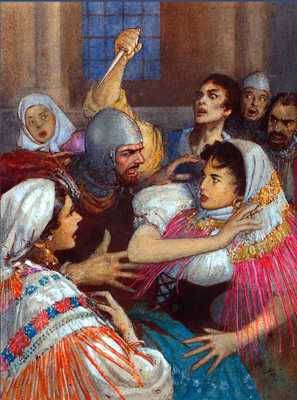
The Sicilians, fed up with being occupied by foreign forces, decided to go all out in their revolt against the French and their 20 year reign over the Kingdom of Sicily. With tensions high, thousands of Sicilians gathered for Easter Monday services and festivities at the Church of Santo Spirito in Palermo. 200 armed French troops soon arrived to frisk the Sicilians in search of any weapons. Though emotions were close to boiling over, the Sicilians obeyed their French occupiers, attempting to avoid any trouble. A Frenchman unwisely took the opportunity to grope a young maiden, thrusting his hand down her blouse. “Death to the French” was cried as a young man took the Frenchman’s sword and slew him on the spot. Chaos ensued as the outnumbered, but armed, French troops were at the mercy of an unruly mob of Sicilians. Though they suffered many casualties, the Sicilians succeeded in massacring all 200 French soldiers. The War of the Sicilian Vespers had begun, and the savagery would continue.
The streets of Palermo would flow red with French blood. Attempting to eradicate all traces of the French from their island, Sicilian women who had married Frenchmen were also slaughtered. Their children were not spared, as they were butchered in front of their mothers. The wombs of women believed to have been impregnated by Frenchmen were ripped out. Those of questionable origin were forced to say the word “ciciri”, which the French had difficulty pronouncing. The pious Sicilians even stormed the monasteries and murdered French monks. Upwards of 2,000 were killed that first day of the massacres, and thousands more would perish in the following weeks.
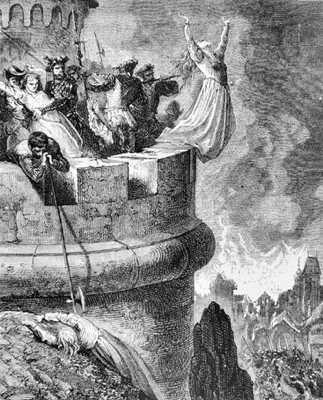
Ordered by Francis I of France, roughly 2,000 soldiers were sent in to slaughter the Waldensian population within the village of Merindol, and over twenty other towns. Because of their connection to the Protestants, Calvinists and other unorthodox, heretical “opposition” groups, the scourge of the Waldensians was approved by Pope Paul III and the Catholic Church. Thousands were murdered and hundreds more were sent to forced labor camps. Interestingly, the execution of one particular man is thought to be the first example of execution by firing squad in Europe.
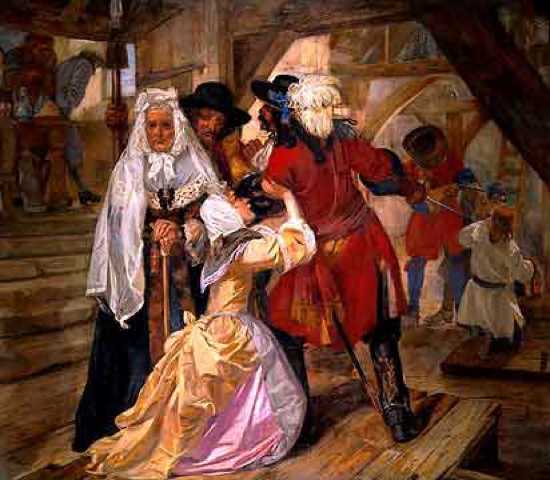
The Bloody Assizes were a series of trials conducted by, Chief Justice George Jeffreys, in the aftermath of the Battle of Sedgemoor, which concluded the Monmouth Rebellion in England. After the Duke of Monmouth was executed for treason, over 1,400 of his supporters and fellow rebels were imprisoned, tried and executed or deported to a penal colony in the West Indies as a source of cheap labor. Most were executed for treason via burning at the stake, though at least one woman’s sentence was commuted to beheading. The law recognized no distinction between principals and accessories in treason. About 300 rebels were hanged, drawn and quartered. 144 more were hanged, with their corpses being displayed around the county as a warning to those who are tempted to rebel against the king. Over 800 rebels were sent to the West Indies. Most of the rebels still awaiting trial in prison, died from the unsanitary living conditions, which manifested Typhus. Interestingly, a woman named Elisabeth Gaunt had the distinction of being the last woman in England to be burnt for political crimes.
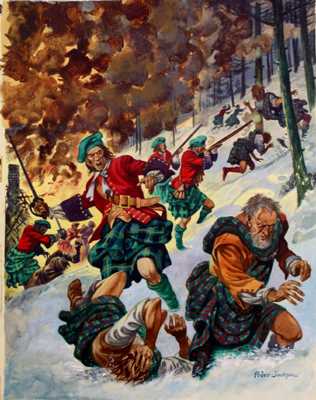
When William III became King of England, it was required that the Highland chieftains of Scotland, under penalty of death, were to take an oath of submission and allegiance to the rule of William and Mary, by a deadline set for January 1st, 1692. Unfortunately, the chieftain of the Macdonald clan of Glencoe, was delayed by a blizzard. He did not take the oath until January 5th. Upon being informed of the missed deadline, King William ordered the Macdonald clan to be eliminated. By February, 120 of the king’s men arrived at Glencoe where they were hospitably entertained for twelve days. In the early morning hours of February 13th, the men were ordered to slaughter every Macdonald under the age of seventy. While the bloodbath at dawn was taking place, a majority of the Macdonalds were able to escape into the wilderness, where they were forced to remain in hiding for months. Thirty-eight adult men in the Macdonald clan were slaughtered, along with forty women and children who died of exposure. The crime was deemed even more heinous under Scottish law, due to it being “murder under trust.” The rival Campbell clan is also said to be partly responsible, given that the Macdonald chieftain, who was slain in the massacre, had received a letter of protection if the situation warranted him to take the oath after the deadline had passed, thus creating a veil of suspicion over the entire outcome of this event.
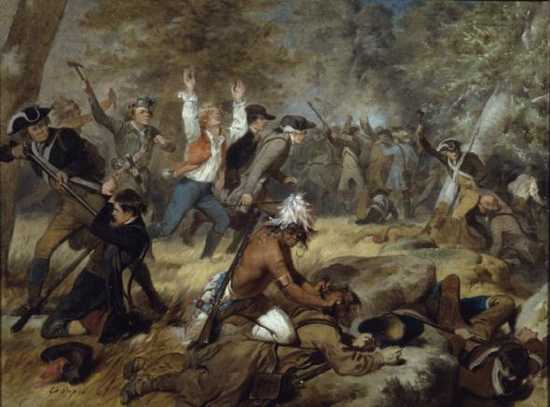
One of the most brutal raids of the American Revolution, a Loyalist-Iroquois coalition massacred more than 200 unsuspecting Patriot militiamen. Having raided and scorched dozens of frontier towns in upstate New York and Pennsylvania, the British arrived in Wyoming Valley, Pennsylvania, on July 3rd. The Patriots, inexperienced and outnumbered, were ambushed and subsequently routed following a forty-five minute close combat battle. As the Patriot line crumbled, the Iroquois began brutally hunting down survivors. Only sixty Americans survived to see another day, and only five were taken prisoner. Fleeing soldiers who had surrendered, were tortured to death by Loyalists and Iroquois. It was reported that 227 Patriot scalps were collected. Dozens of bodies were found on the line of retreat, which were all buried in a common grave. In retaliation, the Sullivan Expedition, commissioned by General George Washington, systematically destroyed at least forty Iroquois villages throughout upstate New York, in 1779. Another gruesome massacre would take place against the Continental Army at Cherry Valley. Reports of the massacres of prisoners at Wyoming and atrocities at Cherry Valley enraged the American public.

The Auspicious Incident was the forced disbandment of the centuries-old Janissary corps by Ottoman sultan Mahmud II, who felt that the elite guard unit had acquired too much power and influence over the declining Ottoman Empire. Mahmud incited the Janissaries to revolt on purpose, in order to give reason in destroying them. Mahmud said that he was creating a new army, made up of mostly Turks, as the Janissaries were Christians from conquered countries (who were later converted to Islam). Thus, as predicted, they mutinied, advancing on the sultan’s palace. In the ensuing fight, the Janissary barracks were bombarded and obliterated by artillery fire, resulting in 4,000 Janissary fatalities; more were killed in the heavy fighting on the streets of Constantinople. The survivors either fled or were executed, and their possessions were confiscated by the Sultan. The last of the Janissaries were then put to death by decapitation in what was later called the blood tower, in Thessaloniki. Thousands of Janissaries had been killed, and the elite order came to its end. A new modern corps, Asakir-i Mansure-i Muhammediye (Muhammed’s Victorious Army) was established by Mahmud II to guard the Sultan and replace the Janissaries.

The Sauk Chief, Black Hawk, was unhappy with the deal the United States made with his people for their land. Angered by the loss of his birthplace, Black Hawk led a number of incursions across the Mississippi River into Illinois, during 1830 and 1831, but each time was persuaded to return west without bloodshed. In April 1832, encouraged by promises of alliance with other tribes and the British, he again moved his so-called “British Band” of around 1,000 warriors and non-combatants into Illinois. Finding no allies, he attempted to return across the Mississippi to present-day Iowa again, but the undisciplined Illinois Militia’s actions led to Black Hawk’s surprising victory at the Battle of Stillman’s Run. A number of other engagements followed, and the militia of Michigan Territory and the state of Illinois were mobilized to hunt down Black Hawk’s band. The conflict became known as the Black Hawk War. The Battle of Bad Axe followed the Battle of Wisconsin Heights and was the final battle of the Black Hawk War. Women and children fled the fight into the river, where many drowned immediately. The soldiers killed everyone who tried to run for cover or cross the river; men, women and children alike were shot dead. More than 150 people were killed outright at the scene of the battle, which many combatants later termed a massacre. The soldiers then scalped most of the dead, and cut long strips of flesh from others for use as razor strops. U.S. forces captured an additional 75 Native Americans. Those who managed to escape across the river found only temporary reprieve, as many were captured and killed by Sioux warriors acting in support of the U.S. Army.
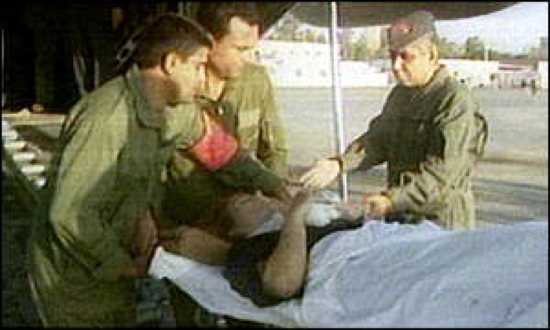
The attack is thought to have been instigated by exiled leaders of Al-Gama’a al-Islamiyya, an Egyptian Islamist organization, attempting to undermine the July 1997 “Nonviolence Initiative”, devastate the Egyptian economy and provoke the government into repression that would strengthen support for anti-government forces. The Islamic Group was against a secular Egypt, and desired to establish an Islamic state in its place. They also demanded the release of their leader, cleric Sheikh Omar Abdel-Rahman, imprisoned in the United States for conspiracy in the 1993 World Trade Center Bombing in New York. The six assailants were armed with automatic firearms and knives, and disguised as members of the security forces. They descended on the Temple of Hatshepsut and would ultimately take the lives of 62 tourists.
With the tourists trapped inside the temple, the killing went on systematically for 45 minutes, during which many bodies, especially of women, were mutilated with machetes. A note praising Islam was found inside one disemboweled body. The dead included a five-year-old British child and four Japanese couples on their honeymoons. The attackers then hijacked a bus, but ran into a checkpoint of armed Egyptian tourist police and military forces. One of the terrorists was wounded in the shootout and the rest fled into the hills where their bodies were found in a cave, apparently having committed suicide together.
Being a pre-9/11 terrorist attack, like the 1993 WTC bombing and 1995 Oklahoma City bombing to a lesser extent, it has often been ignored and pushed aside in the history books. Besides 9/11, this is partially because it did not have the desired effect the terrorists wanted, it arguably backfired on them. Egyptian public opinion turned against them and the organizers and supporters began denying involvement.

Credonia Mwerinde was the high priestess and co-founder of the Movement for the Restoration of the Ten Commandments of God, a sect that splintered from the Roman Catholic Church in Uganda. Mwerinde and Joseph Kibweteere claimed to have witnessed visions of the Virgin Mary. With the new millennium looming, activity by Movement members became frenzied, their leaders urged them to confess their sins in preparation for the apocalypse. January 1st, 2000, passed without the advent of the apocalypse, and the Movement began to unravel. Another date was immediately predicted, March 17 was the new end of the world. When that date came around, over 500 members entered a church in western Uganda and began singing. Hours later, the building was set on fire, with the doors locked and the windows boarded up and nailed shut. Everyone inside was incinerated, including eleven children. At first the authorities thought the church fire was a mass suicide attempt by the cult, but later they changed their minds when bodies began to show up in other places.
Members wanted their money back when the world didn’t end and the cult leaders refused, so they murdered them all. Bodies were found in wells, latrines, under houses and in gardens. Some members had been poisoned, stabbed or clubbed. The estimated death toll is about 1,000. Although it was initially assumed that the five leaders died in the fire, police now believe that Joseph Kibweteere and Credonia Mwerinde may still be alive, and have issued an international warrant for their arrest.








